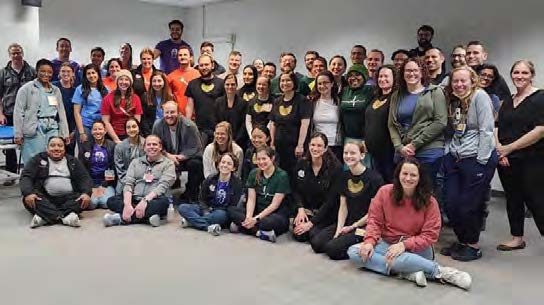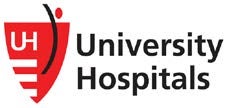

University Hospitals | Cleveland, Ohio: University Hospitals Excels at Personalized, Innovative Patient Care
Patient Safety Member Story
University Hospitals Excels at Personalized, Innovative Patient Care
 University Hospitals serves the needs of approximately a million patients annually through an integrated network of 21 hospitals, more than 50 health centers and outpatient facilities, and over 200 physician offices across 16 counties throughout northeast Ohio.
University Hospitals serves the needs of approximately a million patients annually through an integrated network of 21 hospitals, more than 50 health centers and outpatient facilities, and over 200 physician offices across 16 counties throughout northeast Ohio.
Founded in 1866, UH is a renowned academic medical center and community hospital network, reaching patients and communities to deliver personalized, compassionate care, medical discovery, and breakthroughs. The system’s 32,000 employees are guided by the core values of Service Excellence, Integrity, Compassion, Belonging, and Trust. UH sets the highest standards for quality and patient safety and has received prestigious awards and recognition for upholding a high-quality, personalized patient care experience that integrates the latest medical and research innovations.

A Transformational Framework
UH has embraced a culture rooted in love to foster a safe and healthy care environment. At UH, creating a culture based on love has enabled them to innovate faster and transform their health care system through joy. Their transformation is organized in three key steps:
- Believe: UH asks employees—from doctors and nurses to housekeepers and janitorial staff––to create “I will” statements to set intentions and foster a culture of improvement and empowerment.
- Belong: UH supports employees in speaking up about safety concerns, raising ideas for improvement, and establishing relationships across the system to learn from each other.
- Build: UH has a shared accountability system so that employees at all levels are responsible for the system’s success.
UH holds weekly meetings to highlight “illuminators” within the system to elevate their successes and help each other improve. During that time, UH also celebrates and rewards “micro-moments of love” and acts of compassion through its Illuminator Award to recognize people who connect, uplift, and improve by sharing positive comments weekly to all units.
Participants in these meetings represent all fields in the system – from executive leaders and finance professionals to pharmacists and frontline staff. At these meetings, employees can stand up and recognize their colleagues for an Illuminator’s Award. This program enables UH employees to celebrate each other by focusing on their safety and quality successes.
Workforce Engagement to Improve Patient Safety
To make UH’s transformation framework a reality, the organization has used multiple approaches to enable its workforce to illuminate the path to better outcomes:
- Greater autonomy. UH has found that giving their physicians and employees more autonomy in setting their schedules and managing their workload has led to better patient outcomes. With increased autonomy, UH’s patient experience scores have dramatically improved. UH shares these scores with its units each week so employees can see their quality and safety efforts are working.
- Worker safety: UH has prioritized worker safety and supports programs to better insulate staff from harm, including the implementation of a Behavioral Emergency Response Team. UH offers staff-wide de-escalation trainings, clearly established behavioral boundaries, and an interdisciplinary interlevel team devoted to crafting workplace violence solutions.
- Employee empowerment: UH enables employees to lead problem solving to achieve positive results for patients. Each ICU unit has been empowered to create a unique system to prevent infection among their patients, which has led to 14 CAUTI-free units for a year (catheter-associated urinary tract infections). Other infection areas have also greatly decreased by encouraging departments to develop their own improvement processes, including implementing peer-accountability systems.
“Every employee is an illuminator, even if they may not see it in themselves.”
Dr. Peter Pronovost
A System-Wide Culture of Patient Safety
At UH, patient safety is viewed as everyone’s responsibility. It is a culture in which everyone has a duty to report their concerns—and is appreciated for doing so. UH’s policies promote a culture of prevention, not punishment. To establish a non-punitive, blame-free system at UH, incident reporting practices allow reports to be entered anonymously. The reporting philosophy also acknowledges that everyone is responsible and accountable to their patients, the public, and other staff to make UH a safe, healthy environment. They also created a system for reporting compassion gaps to help employees manage burnout and ensure they are practicing self-care.
UH ensures patients can participate fully in a culture of patient safety. University Hospitals is a firm supporter of the Speak Up Campaign, a national patient safety campaign that urges patients to help prevent errors by becoming active, involved, and informed participants in their own health care. To support this program, UH developed a training video titled Pause Please to encourage anyone with a concern to “call a pause,” which is honored by staff to immediately address patient concerns. The program encourages patients to pay attention to the care they receive and further educate themselves about their condition.
UH strives to ensure its workforce supports the mission and understands how they contribute to it. By engaging and empowering all levels of staff and leadership, UH’s workforce has successfully improved patient outcomes and made measurable performance improvements.
A Scalable Model for Success
UH has created its model for transformation to be replicable and adaptable by hospitals and health systems across the country, offering other care providers a roadmap to help navigate how to embrace safety and improvement that is rooted in the most basic human emotion – love.


